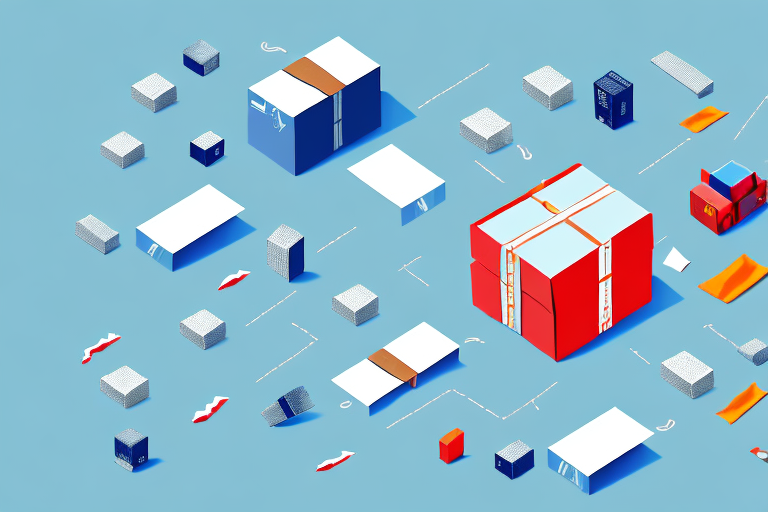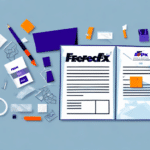Importance of Insuring Your FedEx Shipments
Shipping valuable items with FedEx requires careful consideration of insurance to safeguard against potential losses. Insurance provides financial protection in cases where your shipment is lost, damaged, or delayed, ensuring that you aren't left at a financial disadvantage.
Statistics show that a significant percentage of shipments encounter some form of mishandling or damage during transit. According to the International Air Transport Association (IATA), the rate of shipment damages can vary based on the type of goods and handling processes. By insuring your shipments, you mitigate the risk of financial loss and maintain trust with your customers.
Types of FedEx Shipping Insurance
Declared Value Coverage
Declared Value Coverage is included in your shipping fee and covers up to $100 per package. If your item's value exceeds $100, you have the option to purchase additional coverage, extending protection up to $50,000 per package.
FedEx Declared Value Advantage
The FedEx Declared Value Advantage offers more comprehensive protection, covering the total cost of your shipment, including freight charges and additional fees. This option is ideal for high-value items or bulk shipments where comprehensive coverage is essential.
It’s important to understand the limitations and exclusions of each insurance type. For detailed information, refer to the FedEx Value Insurance page.
How to Add Insurance Using FedEx Ship Manager
Adding insurance to your FedEx shipment via FedEx Ship Manager is a straightforward process. Follow these steps to ensure your shipment is adequately protected:
Step-by-Step Guide
- Log in to your FedEx Ship Manager account.
- Enter the shipment details for your package.
- Navigate to the “Declared Value and Insurance” section.
- Select either Declared Value Coverage or FedEx Declared Value Advantage.
- Choose the appropriate coverage amount based on the value of your shipment.
- Review the coverage details and submit your shipment.
By following these steps, you can ensure that your valuable items are protected throughout the shipping process.
Common Mistakes to Avoid When Insuring Shipments
Incorrect Coverage Selection
One common mistake is not selecting the appropriate insurance coverage for the value of your shipment. Underinsuring can lead to inadequate protection, while overinsuring may result in unnecessary expenses. Carefully assess the value of your goods before choosing a coverage option.
Failure to Declare Accurate Value
Accurately declaring the value of your shipment is crucial. Understating the value can complicate the claims process, while overstating may violate FedEx policies. Ensure that the declared value matches the actual worth of the items being shipped.
Ignoring Exclusions and Limitations
Not all items are eligible for insurance coverage. Items such as antiques, artwork, and jewelry often require special handling and additional insurance. Review the FedEx insurance policies to understand what is and isn’t covered.
Choosing the Right Insurance Coverage for Your Shipment
When selecting insurance for your shipment, consider the following factors to ensure adequate protection:
- Value of Goods: Ensure the insurance coverage meets or exceeds the total value of the items being shipped.
- Type of Goods: High-value or fragile items may require specialized insurance or additional coverage.
- Shipping Destination: International shipments may have different insurance requirements and limitations.
- Risk Factors: Assess potential risks associated with the shipping route, such as weather conditions or handling processes.
Additionally, for high-value shipments, consider third-party insurance providers that may offer more extensive coverage options.
Filing Claims for Lost or Damaged Shipments
How to File a Claim
If your shipment is lost or damaged, filing a claim with FedEx promptly is essential. Follow these steps to navigate the claims process:
- Visit the FedEx Claims page.
- Fill out the online claim form with accurate shipment details, including the tracking number and shipment date.
- Provide a detailed description of the damage or loss.
- Submit supporting documentation, such as photos of the damaged goods and proof of value.
- Monitor the status of your claim through your FedEx account or by contacting FedEx customer service.
Claim Processing Time
The time required to process a claim varies based on the complexity of the case. Simple claims may be resolved within a few weeks, whereas more complex cases requiring additional information can take several months. To expedite the process, ensure all submitted information is accurate and complete.
For more information on claim timelines and the process, refer to the FedEx Value Insurance guidelines.
Conclusion
Insuring your FedEx shipments is a critical step in protecting your valuable goods during transit. By understanding the types of insurance available, following the correct procedures to add coverage, and avoiding common mistakes, you can ensure that your shipments are adequately protected against loss or damage.
Furthermore, having comprehensive insurance coverage can enhance customer trust and satisfaction, as it demonstrates your commitment to delivering goods safely and responsibly. Always evaluate the value of your items, choose the appropriate insurance coverage, and stay informed about FedEx's policies to ensure a smooth and secure shipping experience.






















